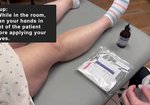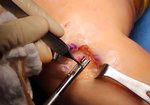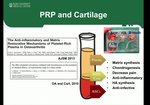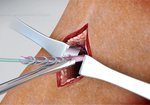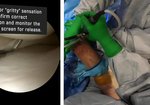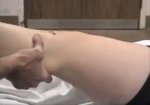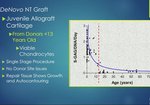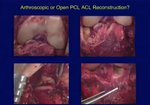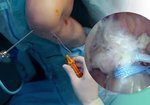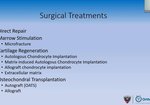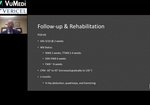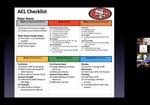Video Player is loading.
Current Time 0:00
/
Duration 0:00
Loaded: 0%
0:00
Stream Type LIVE
Remaining Time -0:00
1x
- 0.5x
- 0.75x
- 1x, selected
- 1.25x
- 1.5x
- 1.75x
- 2x
- Chapters
- descriptions off, selected
- captions settings, opens captions settings dialog
- captions off, selected
This is a modal window.
Beginning of dialog window. Escape will cancel and close the window.
End of dialog window.
10 seconds
Playback speed
This is a modal window. This modal can be closed by pressing the Escape key or activating the close button.
428 views
July 9, 2019
Abstract
Purpose: To present clinical outcomes in a preliminary patient cohort using a biologic augmentation ...
read more ↘ technique consisting of intra-ligamentous and intra-articular infiltration of bone marrow aspirate concentrate (BMAC) and platelet-rich plasma (PRP) under arthroscopic visualization for treatment of isolated and acute partial anterior cruciate ligament (ACL) tears.
Methods: Athletes with acute symptomatic partial ACL injury who had clinical examination findings of increased anterior tibial translation without rotational instability were treated with the biologic augmentation technique. Patients were followed for 2 years post-operatively. The Lysholm Knee Questionnaire, IKDC Objective score, physical examination findings, MRI, and the KT-1000 arthrometer were used to assess clinical outcome.
Results: Five patients were included in the analysis with a median age of 22 years. All patients were determined to have a healed ACL on MRI 8 months post-operatively. The median Lysholm score at final follow-up of 99 was significantly increased from the median pre-operative score (p=0.042). The objective IKDC score improved in all patients post-operatively, and no clinical examination findings of knee instability were identified at final follow-up. Median side-to-side difference in KT-1000 arthrometer testing was 3 mm pre-operatively and 0 mm at final follow-up (p=0.038).
Conclusions: The treatment of appropriately indicated partial ACL injuries in this study has demonstrated that restoration of ligamentous structure and function may be achieved by a biologic augmentation technique using intra-ligamentous and intra-articular infiltration of BMAC and PRP. This technique is performed with minimal technical difficulty and has led to excellent 2 year clinical outcomes in this preliminary series of patients
↖ read less
Purpose: To present clinical outcomes in a preliminary patient cohort using a biologic augmentation ...
read more ↘ technique consisting of intra-ligamentous and intra-articular infiltration of bone marrow aspirate concentrate (BMAC) and platelet-rich plasma (PRP) under arthroscopic visualization for treatment of isolated and acute partial anterior cruciate ligament (ACL) tears.
Methods: Athletes with acute symptomatic partial ACL injury who had clinical examination findings of increased anterior tibial translation without rotational instability were treated with the biologic augmentation technique. Patients were followed for 2 years post-operatively. The Lysholm Knee Questionnaire, IKDC Objective score, physical examination findings, MRI, and the KT-1000 arthrometer were used to assess clinical outcome.
Results: Five patients were included in the analysis with a median age of 22 years. All patients were determined to have a healed ACL on MRI 8 months post-operatively. The median Lysholm score at final follow-up of 99 was significantly increased from the median pre-operative score (p=0.042). The objective IKDC score improved in all patients post-operatively, and no clinical examination findings of knee instability were identified at final follow-up. Median side-to-side difference in KT-1000 arthrometer testing was 3 mm pre-operatively and 0 mm at final follow-up (p=0.038).
Conclusions: The treatment of appropriately indicated partial ACL injuries in this study has demonstrated that restoration of ligamentous structure and function may be achieved by a biologic augmentation technique using intra-ligamentous and intra-articular infiltration of BMAC and PRP. This technique is performed with minimal technical difficulty and has led to excellent 2 year clinical outcomes in this preliminary series of patients
↖ read less
Comments 0
Login to view comments.
Click here to Login



